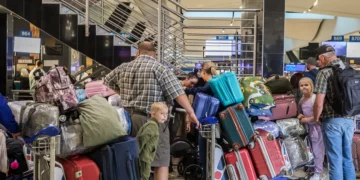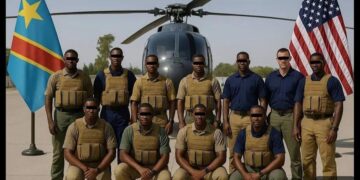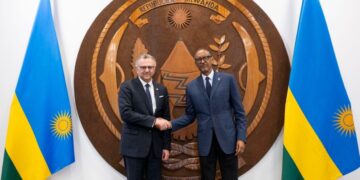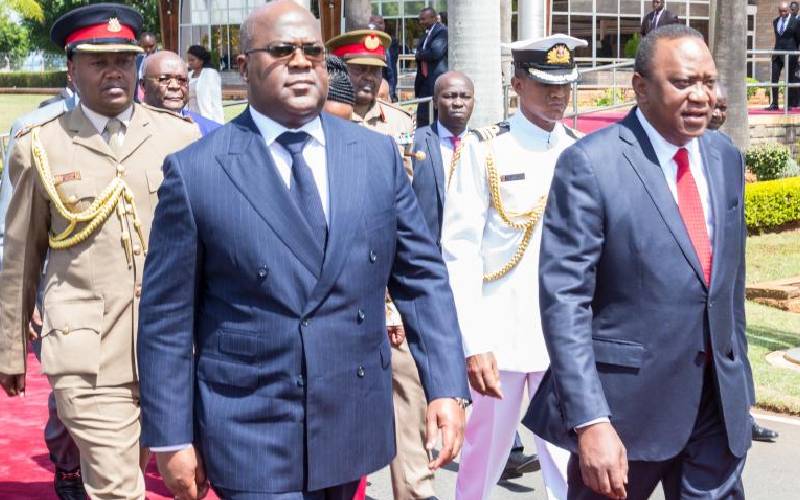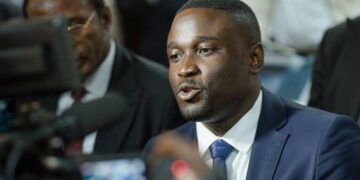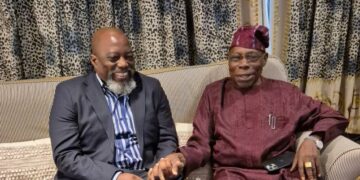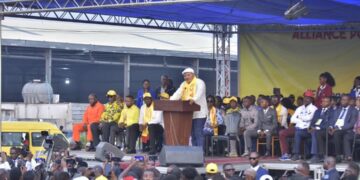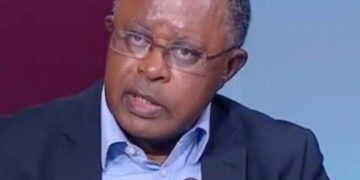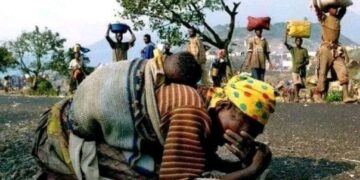Air Force One landed at Abu Dhabi International Airport shortly after noon, where President Trump disembarked to a scene of elaborate pageantry and warm hospitality. A red-carpet walkway stretched from the aircraft, lined with Emirati honor guards dressed in traditional white kanduras and gold-trimmed bishts. Flags of both nations fluttered in the desert breeze, symbolizing the long-standing partnership between the two countries.
As Trump descended the steps of the aircraft, he was met by Sheikh Mohamed, who shook hands and exchanged greetings before the two leaders walked together past a military honor guard. A young Emirati girl in traditional dress presented the U.S. President with a bouquet of white and red flowers, a traditional symbol of welcome and peace. The scent of bakhour, the fragrant Arabian incense burned on special occasions, wafted through the air a gesture traditionally reserved for esteemed guests.

Strategic Significance of the Visit
President Trump’s visit to the UAE follows earlier stops in Saudi Arabia and Qatar and comes amid a renewed push by the United States to reaffirm its alliances in the Gulf. The UAE has long been one of Washington’s closest partners in the region, with extensive cooperation across defense, intelligence, counterterrorism, and economic sectors.
During his stay, President Trump is expected to hold bilateral talks with Sheikh Mohamed at Qasr Al Watan, the presidential palace in Abu Dhabi. The discussions are likely to cover a range of topics, including regional security, Iranian influence in the Gulf, energy cooperation, trade investment, and expanding defense ties.
Sources familiar with the agenda have indicated that both sides will also explore further collaboration on emerging technologies, artificial intelligence, and space exploration — areas where the UAE has recently made substantial progress.
A Landmark Visit Amid Shifting Regional Dynamics
This visit comes at a time when the Middle East is undergoing significant changes. With recent diplomatic realignments, the Abraham Accords, and ongoing concerns about maritime security in the Strait of Hormuz, the U.S. is seeking to reinforce its presence and influence among Gulf Cooperation Council (GCC) states.
For the UAE, President Trump’s visit represents a diplomatic milestone and an opportunity to showcase the nation’s role as a bridge between East and West. The country’s leadership has worked in recent years to cultivate its image as a regional hub for commerce, tolerance, and innovation values that resonate in Washington’s strategic calculus.
Next on the Agenda
President Trump is expected to attend a formal dinner hosted by the UAE leadership, followed by a series of meetings with Emirati ministers and business leaders. A joint press conference is anticipated tomorrow, where both leaders will outline the outcomes of their dialogue and future areas of cooperation.
The symbolism and substance of this visit are clear: the UAE and the United States are intent on deepening an already robust partnership, in a region where stability and trust are increasingly valued.


